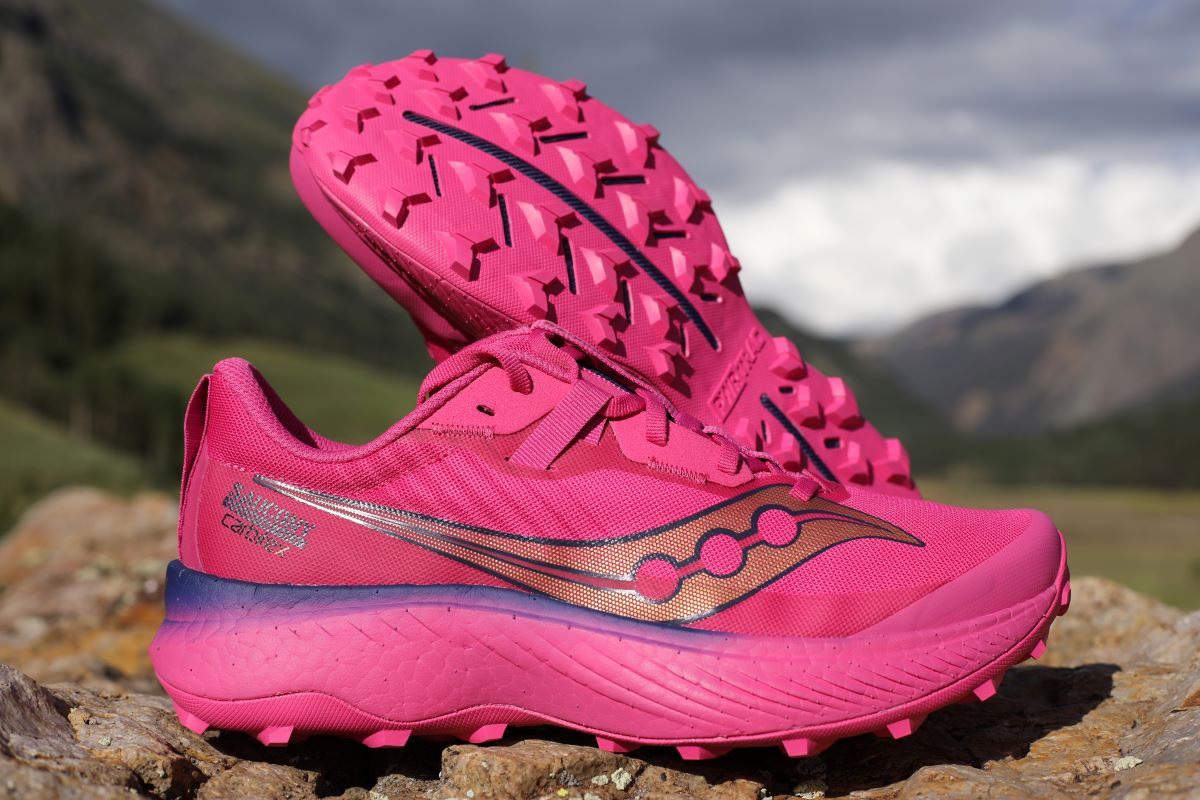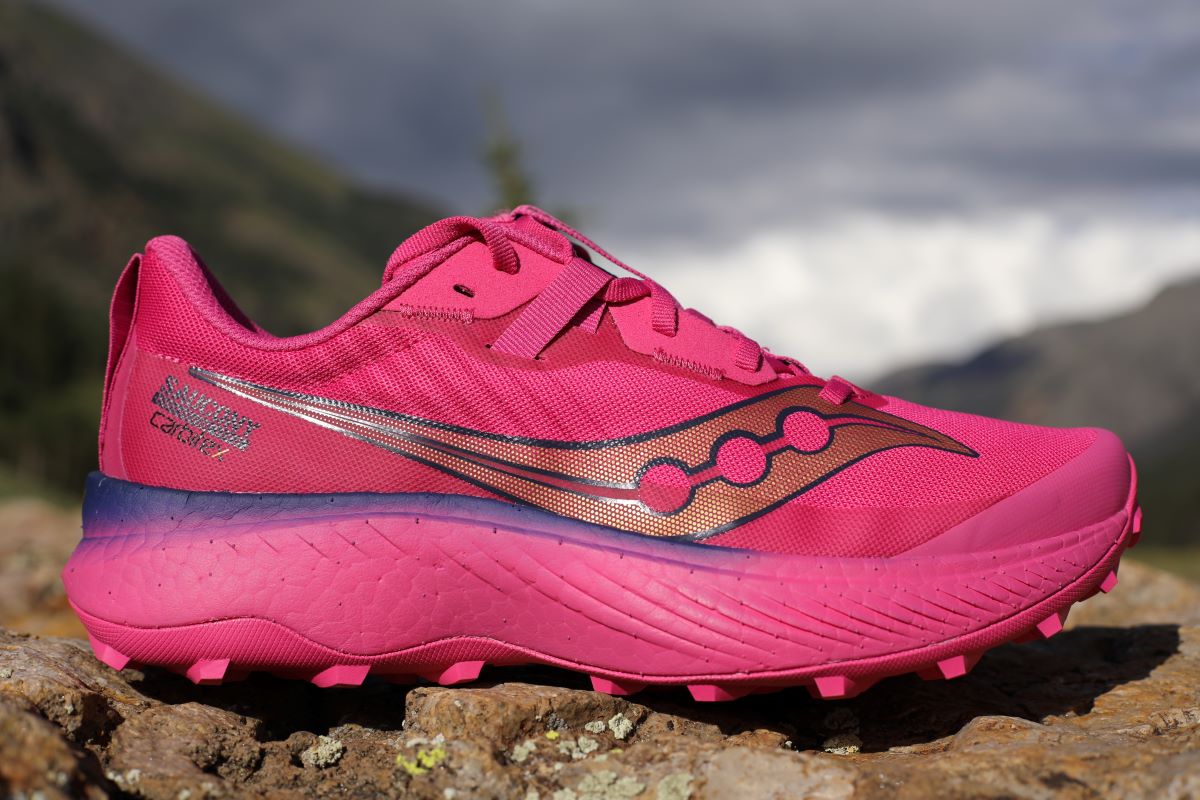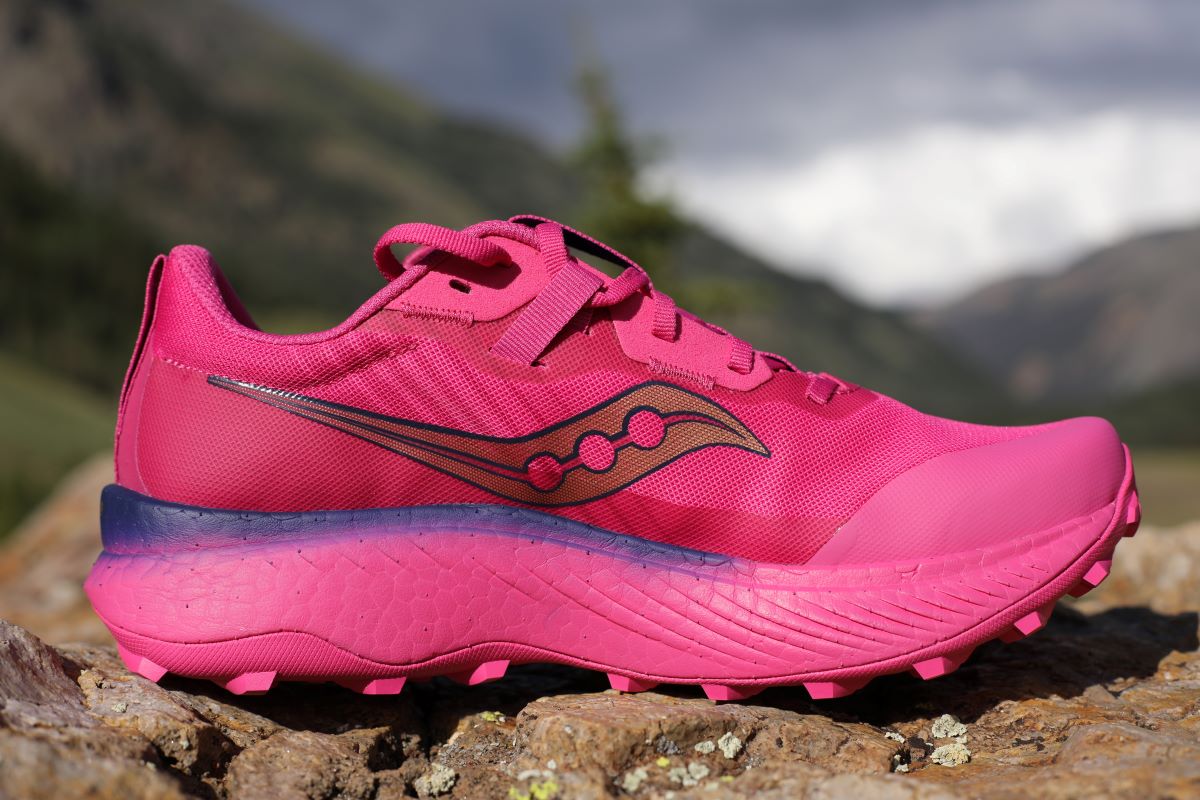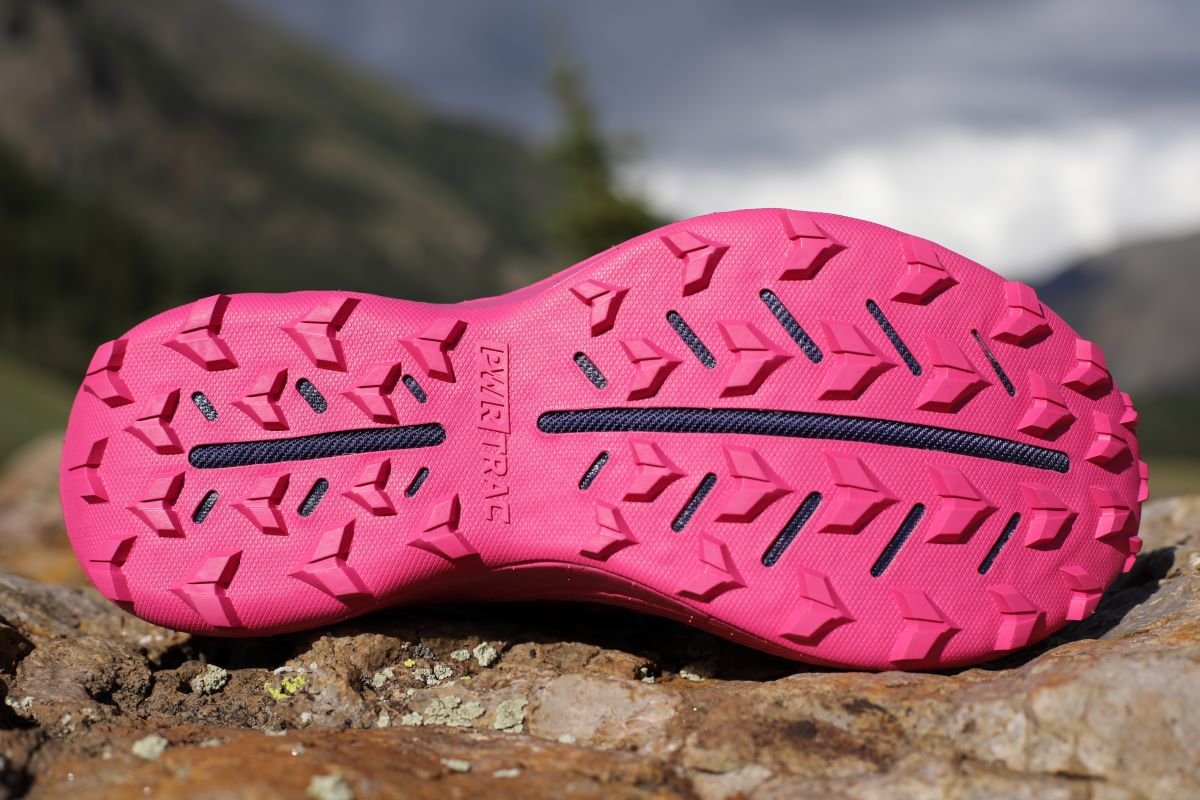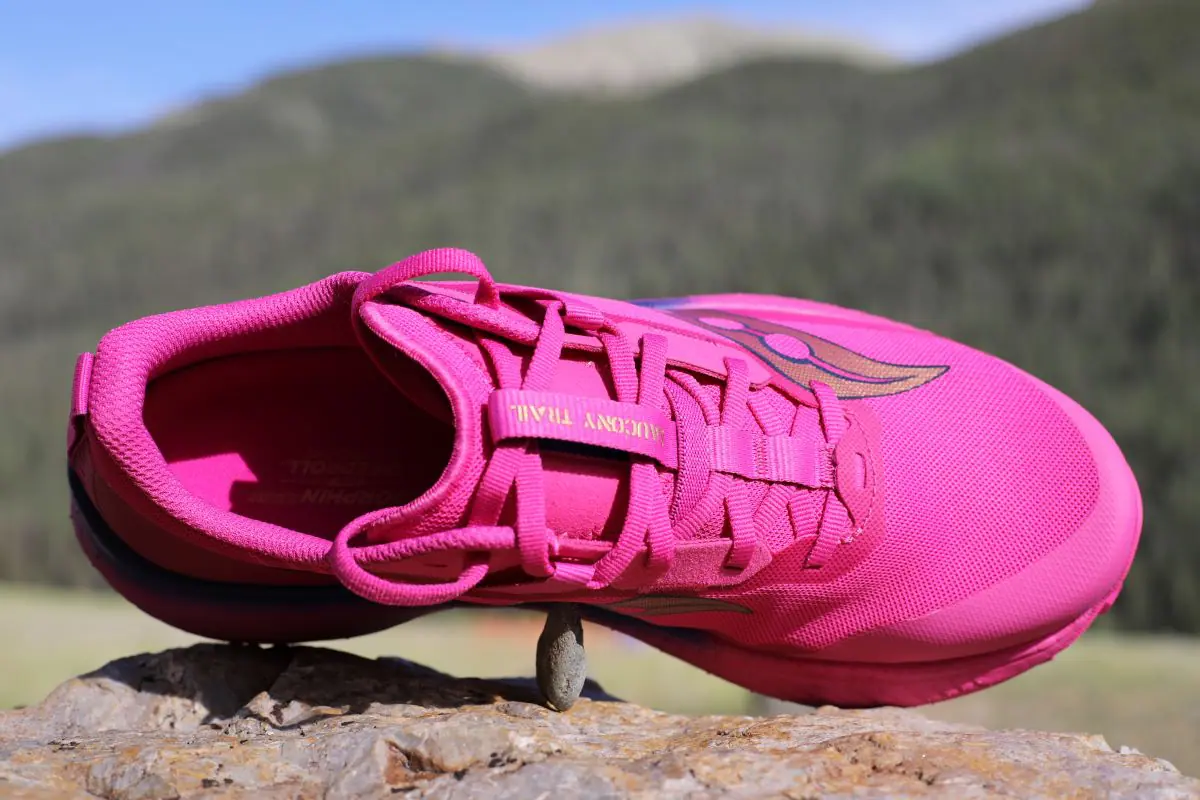Saucony’s Endorphin line of running shoes have been wildly popular with road runners for the last several years since their release. These shoes are based around Saucony’s PWRRUN PB midsole foam which, if you haven’t tried it, is incredibly plush, bouncy, and surprisingly durable. Saucony first released, and then recalled, a shoe called the Saucony Endorphin Trail last winter after a manufacturing inconsistency was discovered in a small percentage of the midsoles that were manufactured. First off, kudos to Saucony for recalling a bad shoe as I can’t remember any other company ever doing this. Secondly, do not confuse that recalled Saucony Endorphin Trail with the shoe we review in this article, the Saucony Endorphin Edge ($200), which was released in the summer of 2022.
Having done a great deal of my road training over the past two years in the Saucony Endorphin Speed and Saucony Endorphin Shift road shoes, I was eager to get my hands on the new Saucony Endorphin Edge. The promising combination of the PWRRUN PB midsole with a carbon plate sounded like it would be a great fit for mellower trails. But what about rocky, loose trails with significant vertical gain and loss? My short-lived experiences with other carbon-plated trail running shoes led me to believe that they felt like nothing other than road shoes with a bit more of a rugged outsole, and I did experience some metatarsal soreness previously when runs included a lot of extended uphills. Would the Saucony Endorphin Edge finally be the carbon-plated trail shoe that lives up to the hype?
Shop the Men's Saucony Endorphin EdgeShop the Women's Saucony Endorphin Edge
Saucony Endorphin Edge Upper
The Saucony Endorphin Edge comes in at an actual weight of 9.1 ounces (259 grams) for a men’s size 9, and somehow manages to incorporate a comfortable and durable upper, that also manages to be lightweight and breathable, on top of a very robust platform that I’ll elaborate on later.
A common mistake I’ve found when testing carbon-plated trail shoes from other companies is that they’ve used road uppers consisting of thin, flimsy, and sometimes sharply laser-cut materials, which don’t really work for trail running. While I understand that some of these models were made for trail racing, the benefits of comfort and protection equate to confidence and speed in trail running.
I’m a heavy sweater, and with most trail running shoes I tend to accumulate salt on the open mesh portions of the upper, causing them to become brittle if I’m not vigilant about washing the shoes. I haven’t noticed this happening with the Endorphin Edge, even in the heat of the summer. The roomy toebox nicely tapers into a snug-but-not-tight midfoot and heel cup. What I most appreciated about the upper of the Endorphin Edge as it manages to fit comfortably and securely enough without feeling tight anywhere, and this is the kind of trail shoe fit that can tolerate the beaten and swollen feet during a 100 miler. Comparably, if you’re a lover of the Saucony Peregrine line, the Endorphin Edge’s toebox is much roomier than the last several versions of the Peregrine. As someone who appreciates the fit of an Altra or Topo, my feet felt at home in the Endorphin Edge.
Also, did I mention that they’re hot pink! This made my 10-year-old daughter very envious and she said I looked cool. Again, kudos, Saucony! If you’re not inclined to impressing fifth graders, there are two other colorways that are much more modest.
Saucony Endorphin Edge Midsole
The Saucony Endorphin Edge midsole is really where the magic happens. As an unabashed PWRRUN PB foam fan, I had reservations about how such a soft, yet responsive, midsole foam would fair on rocky trails. This foam has yet to disappoint me and it continues to feel as it did out of the box, and this has been my experience across the board running in shoes with PWRRUN PB foam. It doesn’t seem to condense or lose its bounciness like other “super foams” I’ve tried from Nike and Hoka. The Endorphin Edge does have a big stack height with a 6-millimeter drop (36 millimeters at the heel/30 millimeters at the forefoot), which also concerned me for stability on trails, which was a non-sequitur. My hypothesis is that the SPEEDROLL technology Saucony uses, combined with the somewhat rounded corners of the midsole and outsole, don’t provide any hard edges for me to roll my ankle or feel wonky on off-camber trails.
The Endorphin Edge has a carbon plate, produced by Carbitex, within the midsole that is different than any other carbon plate shape on the market. Instead of being one, or multiple, solid carbon plates, the Carbitex plate used in the Endorphin Edge has a lobster claw split, which allows flexion. I believe this is why the plate does not bother my metatarsals as the plate seems to flex more and then pop on toe off. This plate extends three-quarters of the length of the shoe and also seems to provide some rock protection as well.
Saucony Endorphin Edge Outsole
The Saucony Endorphin Edge employs the brand’s tried and true PWRTRAC outsole with 4-millimeter lugs, which seems just burly enough to take on almost anything. While I wasn’t able to test the shoe in much mud or wet conditions, I know from previous experience with this outsole rubber is that it has great traction in wet and dry conditions and wears very slowly. Combined with the high stack height and carbon plate, the 4-millimeter lugs weren’t noticed from a ground-feel perspective, and the rockered SPEEDROLL shape makes this a shoe that transitions very quickly.
Saucony Endorphin Edge Overall Impressions
The longer I review gear, especially trail shoes, the pickier I’ve become and the less I endorse. After spending the better part of this summer in the Saucony Endorphin Edge, I can vouch that this is a great trail running all-arounder. As with most carbon-plated shoes, the feel of the shoe changes as I run faster, making the Endorphin Edge a model geared toward faster running and racing, but I enjoyed the shoe’s plush cushioning just as much on easy days. In my personal opinion, the fit and ride of this shoe, especially on technical terrain, is superior to all of the other carbon-plated trail running shoes I’ve tested, including the Hoka Tecton X — check out our Hoka Tecton X review. If you haven’t yet run in a shoe with PWRRUN PB foam, I highly recommend checking out the Saucony Endorphin line and experience the cushioning, and durability, of this midsole material firsthand.
If I had a fall ultra on the calendar, the Saucony Endorphin Edge would be my first pick to race any ultra trail distance.
Shop the Men's Saucony Endorphin EdgeShop the Women's Saucony Endorphin Edge
Call for Comments
Have you tried the Saucony Endorphin Edge? Or any other shoe from Saucony’s Endorphin range? Let us know how you got on!
[Editor’s Note: If you’re affiliated (i.e., an employee, ambassador, etc.) with a brand, please share your relation in each of your comments on this article. Thanks!]
Our Favorite Trail Running Shoes
Check out our Best Trail Running Shoes article to learn about our current favorite trail running shoes!
